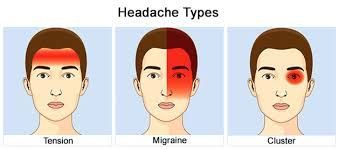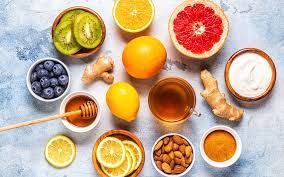Mitigating Migraines

Headaches come in various forms, each with its own distinct characteristics and triggers. Among the most common types are migraines, cluster headaches, and tension headaches. While they may share some similarities, understanding their differences is crucial for effective management and relief.
Migraines are intense, throbbing headaches often accompanied by nausea, vomiting, and sensitivity to light and sound and they can last for several hours to days. They are believed to be caused by abnormal brain activity affecting nerves, chemicals, and blood vessels in the brain. Triggers can vary widely from person to person, including stress, hormonal changes, certain foods, and environmental factors. Many people experience an “aura” beforehand which are sensory disturbances that can include a variety of symptoms. These can include a sensitivity to light, sound, smells, and even taste. Most commonly, people will get flashes of light, blind spots, or tingling in their hands or face 5-60 minutes before the onset of pain.
Relief from migraines is typically provided in one of two ways: medications and/or lifestyle changes. Many people are helped by over-the-counter medications but others may be better helped by prescription medications. Lifestyle changes include managing stress and avoiding known triggers.
Cluster headaches are excruciatingly painful headaches that occur in cyclical patterns or clusters, often around the same time of day or year. They are thought to be related to abnormalities in the hypothalamus, the part of the brain that controls body temperature, hormones, and sleep. With cluster headaches there is no aura and pain tends to be centered behind the temple and eye on one side; these headaches occur most often in males in their 40s and 50s. Triggers can include alcohol consumption, high altitudes, and certain foods.
Cluster headaches are best relieved by oxygen therapy, though there are other options. Oxygen therapy is the inhalation of 100% oxygen over a 15-minute period, usually administered at a neurology office. Other methods include prescription medications, nerve blocks, and lifestyle changes.
Tension headaches are characterized by a dull, aching pain and pressure around the forehead, temples, and back of the head—often referred to as the hat band distribution. Tension headaches tend to last 30 minutes to a few hours—very rarely will these last for days. They are usually caused by muscle tension in the neck and scalp, which can result from stress, poor posture, or anxiety.
Relief from tension headaches is wide-ranging. Over-the-counter medications like acetaminophen (Tylenol) and NSAIDs (ibuprofen) are among the most common solutions. Other effective methods include relaxation techniques, heat, and massage therapy.
Prevention for all three kinds of headaches includes avoiding triggers such as limiting alcohol and caffeine consumption and smoking cessation. Additionally, maintaining a regular sleep schedule, staying hydrated, having good posture, and regular exercise can help you avoid these. And of course, seeking chiropractic care and massage therapy for tension relief and spinal alignment is a great way to prevent headaches.
Understanding the differences between migraines, cluster headaches, and tension headaches is essential for effective management and prevention. While each type may require specific treatment approaches, chiropractic care and massage therapy can play a valuable role in relieving tension, promoting relaxation, and enhancing overall well-being. By incorporating these holistic approaches into your headache management plan, you can work towards finding relief and enjoying a better quality of life. Come visit your local Buffalo chiropractors and massage therapists at Peak Performance and tell your providers if you suffer from headaches!
Bethany Wolcott
D’Youville Chiropractic ‘26












